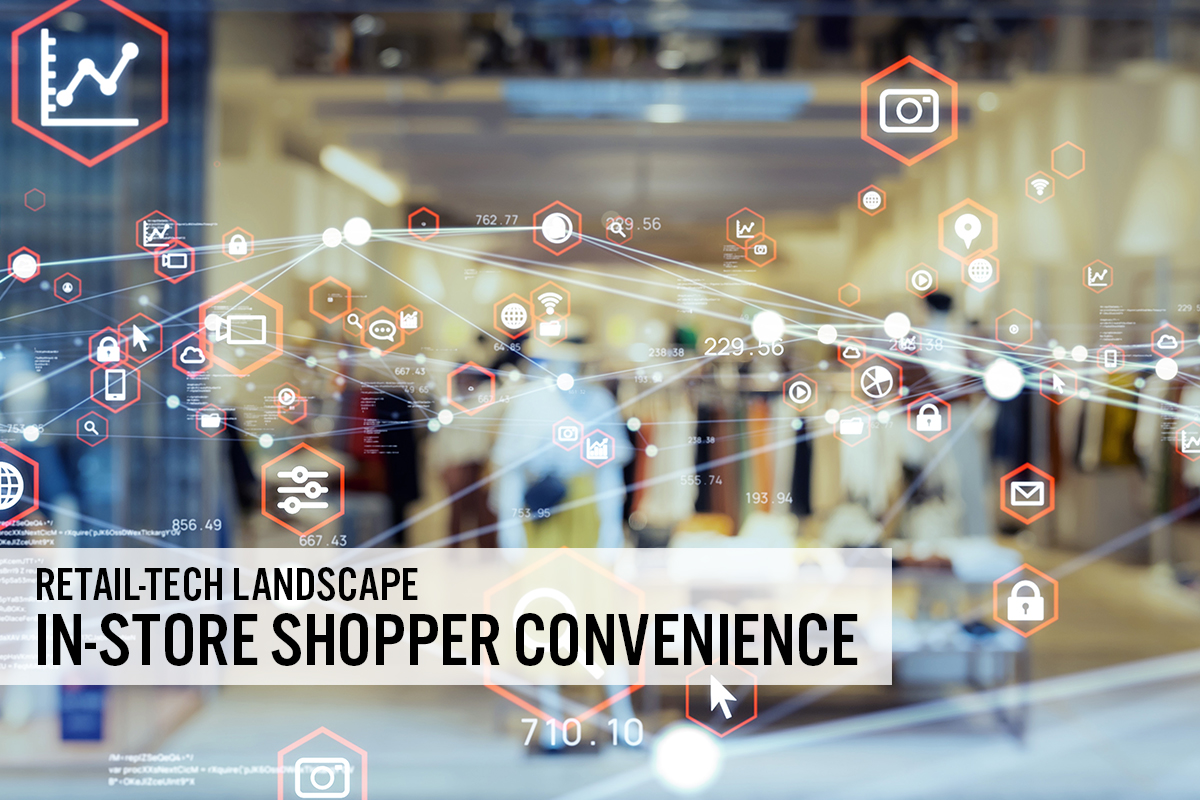Retail-Tech Landscape: In-Store Shopper Convenience
Convenience is imperative in today’s increasingly omnichannel retail environment. A focus on removing friction points and giving shoppers more control across their purchase journeys can substantially improve in-store convenience. Key areas of innovation include improving indoor navigation, ensuring product availability across shelves and enhancing self-checkout capabilities.
Ensuring convenience for shoppers is vital as they continue to make their comeback to public places. Coresight Research’s
weekly survey of US consumers reveals a downward trend in shoppers avoiding public places in general—26.1% of US consumers cited avoiding shopping centers/malls (a decline of 1.3 percentage points over the four weeks to July 25, 2022) and just 19.5% of US consumers cited avoiding retail stores (a decline of 1.7 percentage points for the same period).
This
Retail-Tech Landscape covers selected startups globally whose technology solutions support brands and retailers in offering in-store convenience to shoppers. We have identified 33 startups and companies across the following categories:
- Self-checkout
- Virtual try-on
- Digital kiosks and displays
- Indoor mapping and navigation
- Shelf management
- Workforce tools
Convenience Trends in Retail
Below, we highlight two key industry trends for in-store convenience.
1. Stores Remain Most Popular Purchase Destination for US Back-to-School Shoppers
Shoppers are returning to physical stores, especially for seasonal purchases. Brick-and-mortar is the most popular shopping destination for school supplies with almost three-quarters of US back-to-school (BTS) shoppers (73.9%) planning to make their purchases in a store, according to a June 2022
Coresight Research survey. Furthermore 35% of respondents cited expectations to use store-based pickup services such as BOPIS (buy online, pick up in-store) for their purchases. Below are two key insights for retailers to succeed during BTS shopping and also for the coming holiday season:
- Stores will play an important role in this year’s BTS shopping season and beyond. Brands and retailers must be ready to meet the needs of digitally empowered shoppers and offer in-store convenience by reducing the search to purchase time.
- The significance of omnichannel continues—some 55% of US BTS shoppers expect to buy from at least two channels and 15% of shoppers from at least three channels, Coresight Research June 2022 survey data identified. We believe that providing distinct and relevant experiences in stores will be key to capitalizing on cross-selling and upselling.
2. Elevating Convenience Can Help Retailers Improve Sales
Convenience can substantially improve the overall shopper experience, translating to increased sales as fewer shoppers exit stores without making a purchase. We identified three main areas where shoppers are likely to abandon their purchase due to friction points, as shown in Figure 1.
Removing friction points across product search, sizing/fit queries and checkout can help retailers to provide a seamless and smooth experience for their in-store shoppers, avoiding the typical frustration and product abandonment issues that hurt sales.
Figure 1. Top Areas Where Retailers Can Enhance Shopper Convenience
[caption id="attachment_153605" align="aligncenter" width="700"]
 Source: Coresight Research
Source: Coresight Research[/caption]
Retail-Tech Landscape: In-Store Shopper Convenience—Infographic

Retail-Tech Landscape: In-Store Shopper Convenience, by Category
Self-Checkout: Companies assisting shoppers to checkout without standing in queues or interacting with store associates either through fixed in-store devices or through their mobile phones
[wpdatatable id=2185]
Virtual Try-On: Companies providing augmented reality (AR)-based hardware that shoppers can use in stores to try on apparel, jewelry and footwear
[wpdatatable id=2186]
Digital Kiosks and Displays: Companies offering digital solutions to simplify in-store shopper journeys
[wpdatatable id=2187]
Indoor Mapping and Navigation: Companies assisting shoppers in navigating enclosed spaces such as malls and large stores to ensure they can easily find the products they want
[wpdatatable id=2188]
Shelf Management: Companies that are helping brands and retailers to monitor on-shelf products inventory and stock-keeping units (SKUs) across stores
[wpdatatable id=2189]
Workforce Tools: Companies offering digital solutions for store associates, such as wearables or handheld devices, to enhance in-store shopper convenience
[wpdatatable id=2190]

 Source: Coresight Research[/caption]
Source: Coresight Research[/caption]
